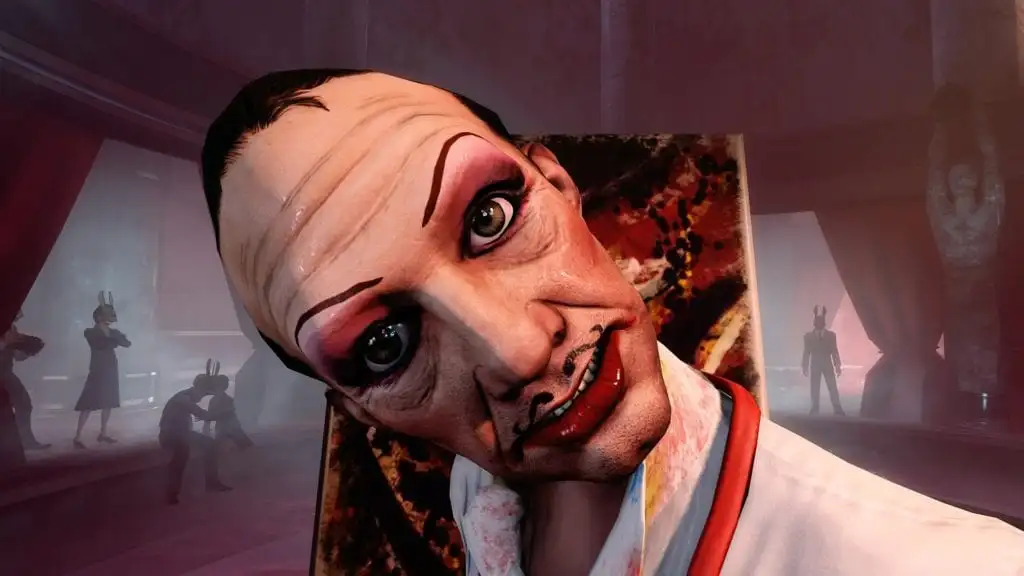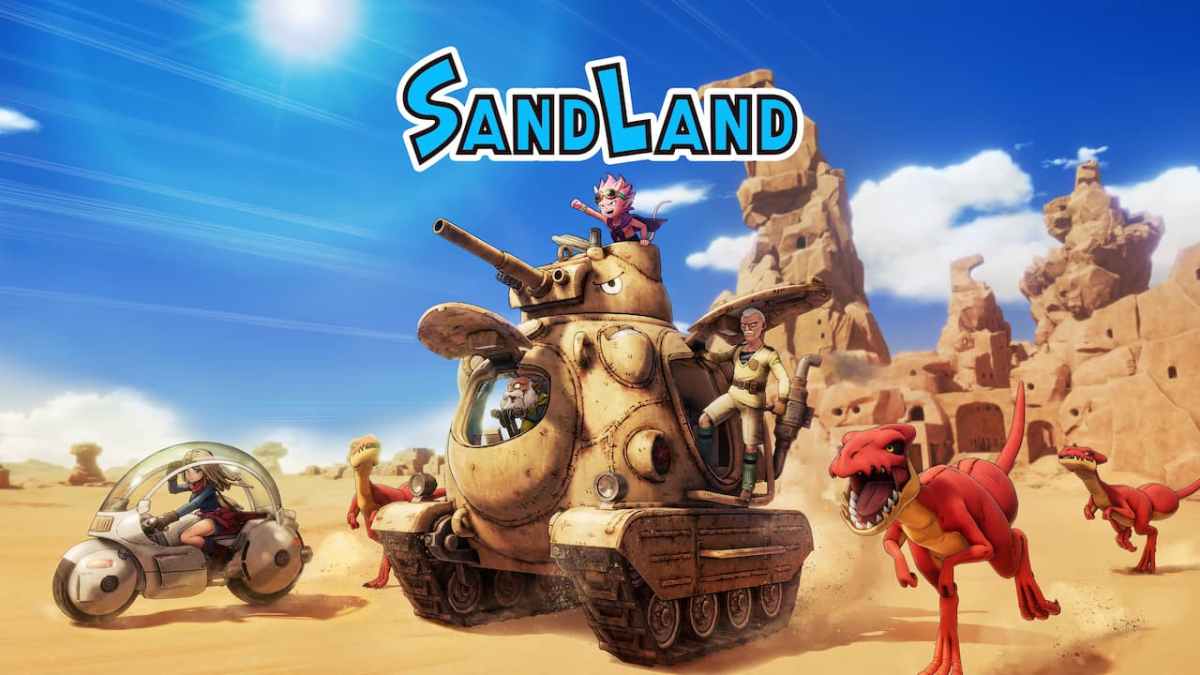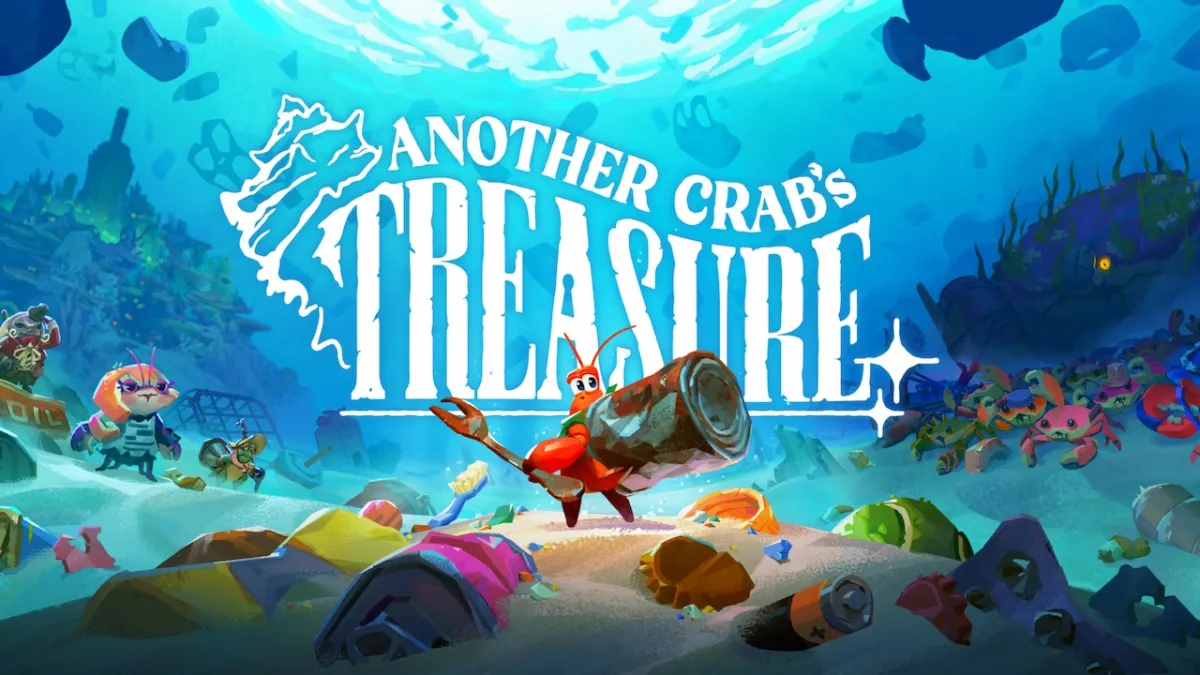As either player or reviewer, losing five hours of progress in a game is a pretty dispiriting state of affairs. It’s indicative of just how much I enjoyed The Banner Saga that having to immediately replay a large portion of it (including the opening chapters I’d already previewed last year) ended up feeling more like an opportunity to experiment with narrative choices than a punishment.
The bug I ran into (which prevented the game from saving any data after a certain point) shouldn’t affect anybody with the final release version, as I’m pretty sure it was down to a conflict between preview and review code. Once I’d purged the saved game folder from Windows and let The Banner Saga create a new one, it started saving fine.

Looks a bit chilly out today, maybe we should’ve stayed at home.
The next indication that Stoic’s Norse-inspired RPG had its narrative hooks in me was when I noticed a pattern to my character selections. Every step of the journey brings turn-based combat encounters, requiring up to six heroes to engage in battle. Rather than attempting to min-max, I found myself just sticking to the characters I liked best, along with those it made sense to find fighting alongside one another (a leader and his bodyguard, or a father and daughter.) This only made matters worse when my poor decisions would lead to one or more of them being killed.
But that’s getting a little too far ahead, because some people reading this may not yet know what The Banner Saga is.
It’s the opening, Kickstarter-funded game in a proposed single-player trilogy, and not to be confused with last year’s free-to-play (and multiplayer only) Banner Saga: Factions. Although if you did play that spin-off title, you’ll have a head start over others where the combat system is concerned. As a first chapter, The Banner Saga manages to provide a full, satisfying 8-10 hour story arc, while still leaving plenty of plot strands dangling for the sequels.
If you’re wondering whether the game is at risk of being left with eternal cliffhangers, Stoic say the next two chapters will go ahead “assuming there’s a big enough demand.”

This guy is nuts, so naturally I employ him as much as possible.
There should be, because The Banner Saga is a splendid RPG. Traditional in some ways, making use of turn-based tactical combat and windows of text to outline certain situations, but in a manner that feels refreshing rather than purely nostalgic. It has echoes of the great King of Dragon Pass, both in the domestic and community dilemmas it presents the player with, and its depiction of a mythological world that’s grounded in the familiar but still has much to discover.
That world is revealed with as little unnecessary exposition as possible. Stoic don’t always manage to abide by the vital rule of “show don’t tell,” but it’s clear they’re trying to do so whenever possible. If a particular character is an arrogant oaf, you’ll know because that’s how they act, not because an in-game encyclopedia or cinematic voice-over told you so. The characterisation is strong enough throughout that the majority of the named heroes feel like actual people, rather than walking skill-sets to be deployed in combat.
The Banner Saga tells its tale from differing narrative viewpoints, meaning the player is embodying different characters at any given time. For most of the game’s seven chapters, you’re taking decisions as Rook, the unwitting new chief of a small village on the land’s eastern shores. But you’ll also be taking charge of a convoy of giant-like Varl, going about their own business in the west. Almost immediately, Rook’s community is displaced and must flee from the re-emergence of a relentless, almost mechanical, race called the Dredge.

That floor looks a little precarious for those giant Varl guys to be stepping on.
Progression through the story is linear in the sense that everyone will see the same key moments in the same locations, but certain actions will result in a rather different journey. Your role as player is to make dialogue choices in face-to-face meetings with other characters, text-based decisions that pop up as your caravan is making its way across the exquisite, Eyvind Earle inspired landscapes, and handle the turn-based battles that may arise as a consequence of those decisions. Three distinct branches of gameplay, all of which feed back into one another.
The ‘renown’ mechanic is a fine example of this. Effectively, renown is your currency. It’s earned through fighting battles and occasionally given as a reward for making certain choices. You can use it for levelling up (promoting) characters, purchasing magic items that will aid you in battle and for purchasing caravan supplies, but will never have enough. It’s important not to neglect that last option, because a caravan without supplies will start losing people and morale rather rapidly. Both affect your ability to fight further battles effectively, and could send your journey into a death spiral from which it cannot recover.
Losing fights (aside from a couple of key ones) doesn’t end the game, you just limp on with reduced numbers and, quite likely, a number of injured heroes. Failure only occurs if you allow too many defeats to stack up, leaving you in a position where the next battle would be borderline impossible. Although The Banner Saga isn’t quite as punishing with saved game slots as I thought during my preview, it can definitely force you into a position where you need to re-load an earlier checkpoint which could be from three or four battles ago.

Unconsciousness. Hungry serpents. Hey, we’ve all been there.
Until you “get” it, combat will probably kick your arse a few times. Except on easy difficulty which lives up to its name to a tee.
The Banner Saga tosses out a few pointers about how best to approach fights (often in dialogue, so there’s yet another reason to pay attention to it,) but it certainly doesn’t tell you everything and isn’t always clear in its summaries of your unit’s special skills. Even after finishing the game I’ve still not really figured out why I’d use a couple of the abilities over the basic “just hit a guy” attack. Maybe they’re just bad, I don’t know.
To survive on normal difficulty and above, it’s necessary to pick up some tricks (like lining Dredge up for bonus armour splash-damage) and take some fundamentals to heart in order to triumph. Units have two values, armour and strength. Strength attacks hit with the unit’s strength value, minus the defender’s armour level. You can opt to make armour attacks instead which only damage armour. Strength is also health, and if it falls to zero the unit goes down.
During my time with the preview build I thought the key was to leave stuff alive on low strength, because until the enemy only has one unit remaining turns keep alternating regardless of the numbers on the battlefield. Therefore, it seemed smart not to finish off weaker forces. Doing so would allow a stronger unit to stick around getting more ‘goes’ than I’d want them to. This basic tactic is okay, but units left alive on purpose can still use special abilities against you or wreck the armour of a unit you’d rather keep protected.

That guy with the big spear is a dangerous fellow.
I’d now say the most important aspect of combat is just looking and planning ahead. Perhaps targetting a foe who’ll be moving next and weakening him so that no matter what action they take it won’t be too damaging. But you also have to look longer-term too, at the super powerful units who’ll need to be whittled down by a couple of your heroes before they get in a position to do too much damage. Inevitably you can’t do all of these things (especially as the odds are always stacked against your squad,) so you have to just manage as best you can.
All that strength/armour stuff probably sounds more complex on paper than it really is in-game, and it’s a system that manages to be fairly straightforward while offering a fair bit of tactical flexibility and mid-battle pondering. The interface is relatively unobtrusive and simple too, although having the “end turn” button right next to “attack” isn’t great. It does at least make you confirm the choice, which saved me more than once.
Occasionally, your entire caravan will be engaged in conflict, pitting whatever remaining fighters and Varl you have with you against a horde of (usually) Dredge. During these ‘War’ situations, you can opt to lead a personal charge (triggering a regular skirmish battle) and perhaps reduce your casualties, or just stand off and oversee the battle with text commands but inevitably lose more troops. It feels a little like a budgetary compromise for including larger battles while still using the same turn-based skirmish model, but does give you further opportunities to earn renown. If the first charge goes well in a war situation, you’ll be offered the chance to chase down even more foes and trigger an immediate second skirmish.

The Godstones are important landmarks in your journey, and this one is giving a cheery wave. Hello!
That risk/reward duality permeates through the game, to the decisions you need to make while on the road. There’s a persistent need to keep morale up, but joining in with some drunken revelry (say,) may leave your convoy open to attack. Likewise, you’ll always be needing more fighters and warriors by your side, but it’s worth keeping in mind just what kind of characters you might be inviting to share tents with you.
I’ve mentioned the magnificent landscapes already, but it’s worth reiterating that the art and animation are terrific throughout. Combat animations in particular add a really dynamic aspect to the turn-based action, as you see fighters struggle to maintain balance after a heavy blow or pull a bow from their back to loose off an arrow. The face-to-face dialogue scenes can sometimes seem a bit static (even with the odd bit of beard wiggling,) but that’s being super picky. Alongside all that, you have Austin “holy crap he did the music from Journey” Wintory providing a score full of nomadic violin and throaty choral Vikings. Lovely stuff.
It’s tempting to say that The Banner Saga is like a long-lost, early Disney film about Vikings, except of course for the fact that Disney would never touch this narrative. The game tells a bleak and relentless tale, depicting a group of dwindling refugees trying to escape the end of the world. With its weighty choices, strong writing and convincing characters, even the dread hand of the saved game apocalypse couldn’t prevent me loving this one.




